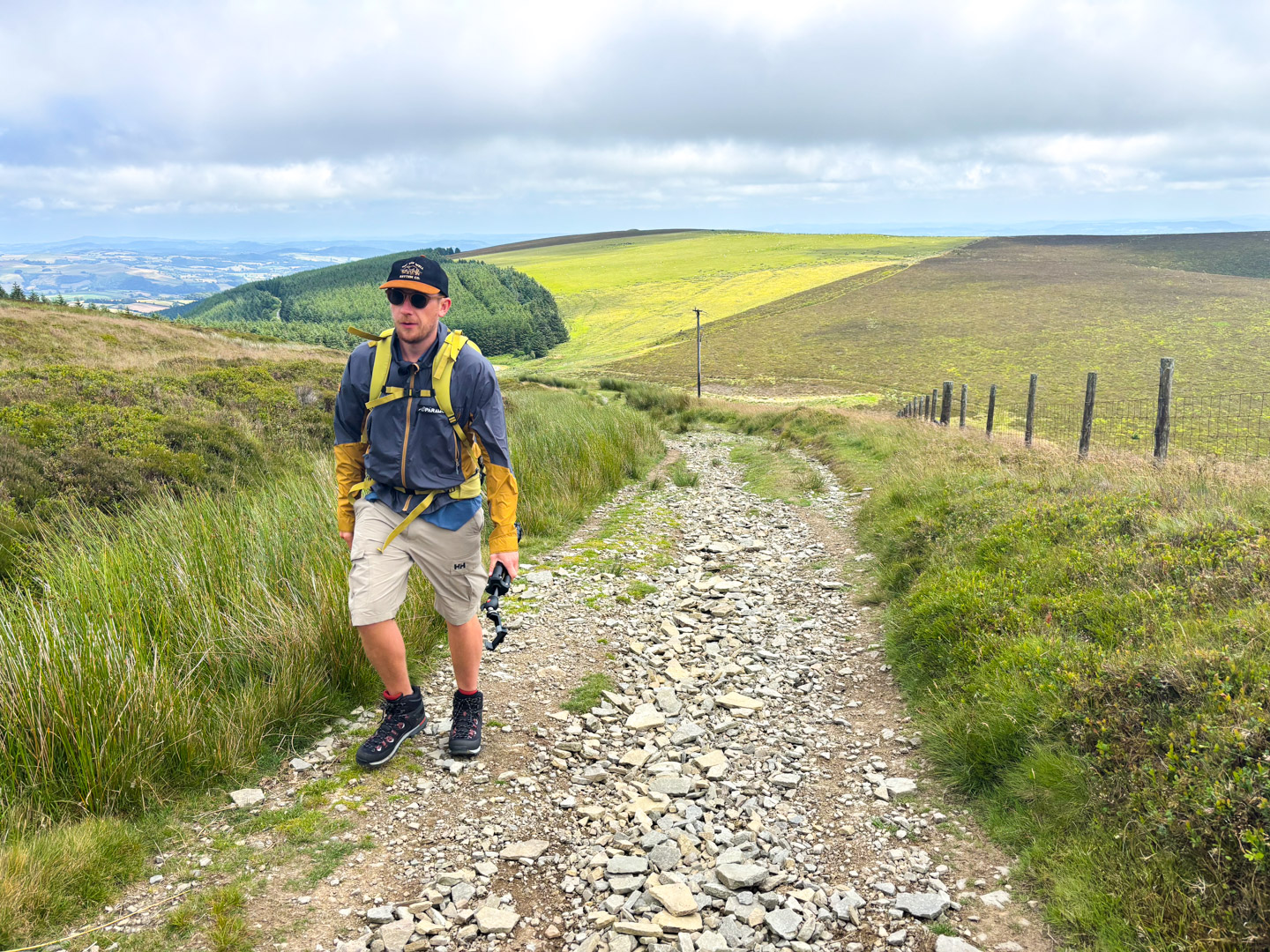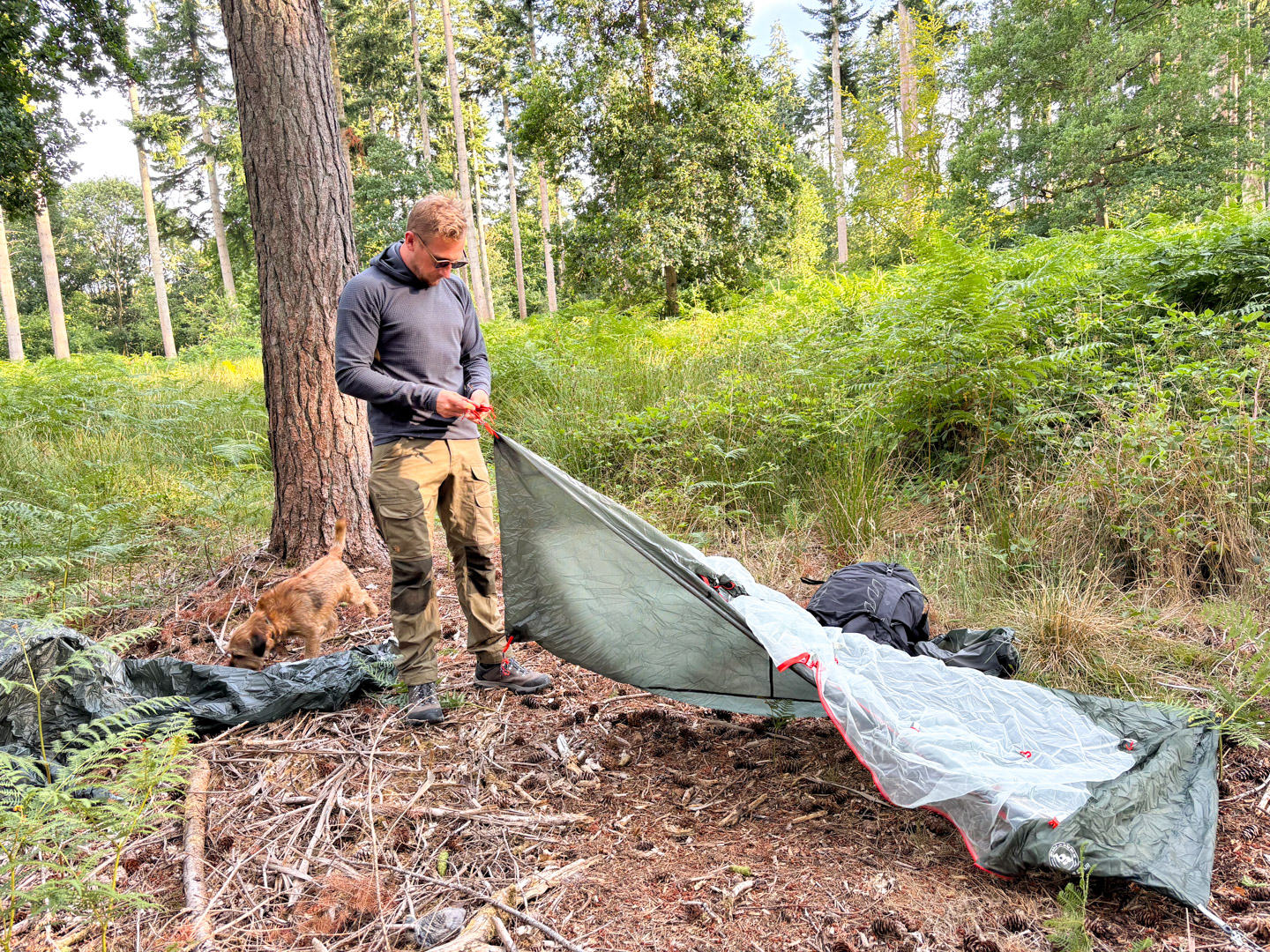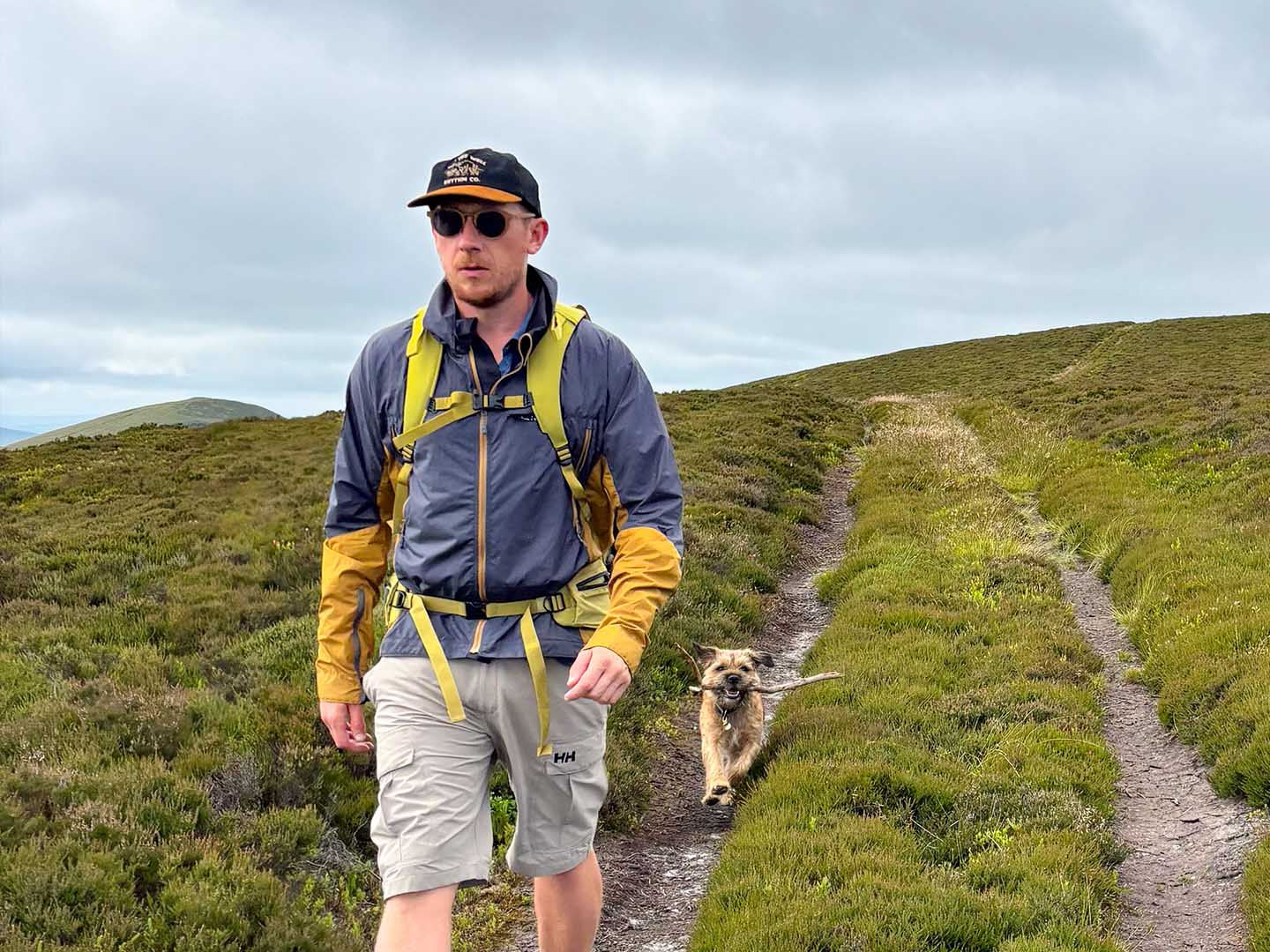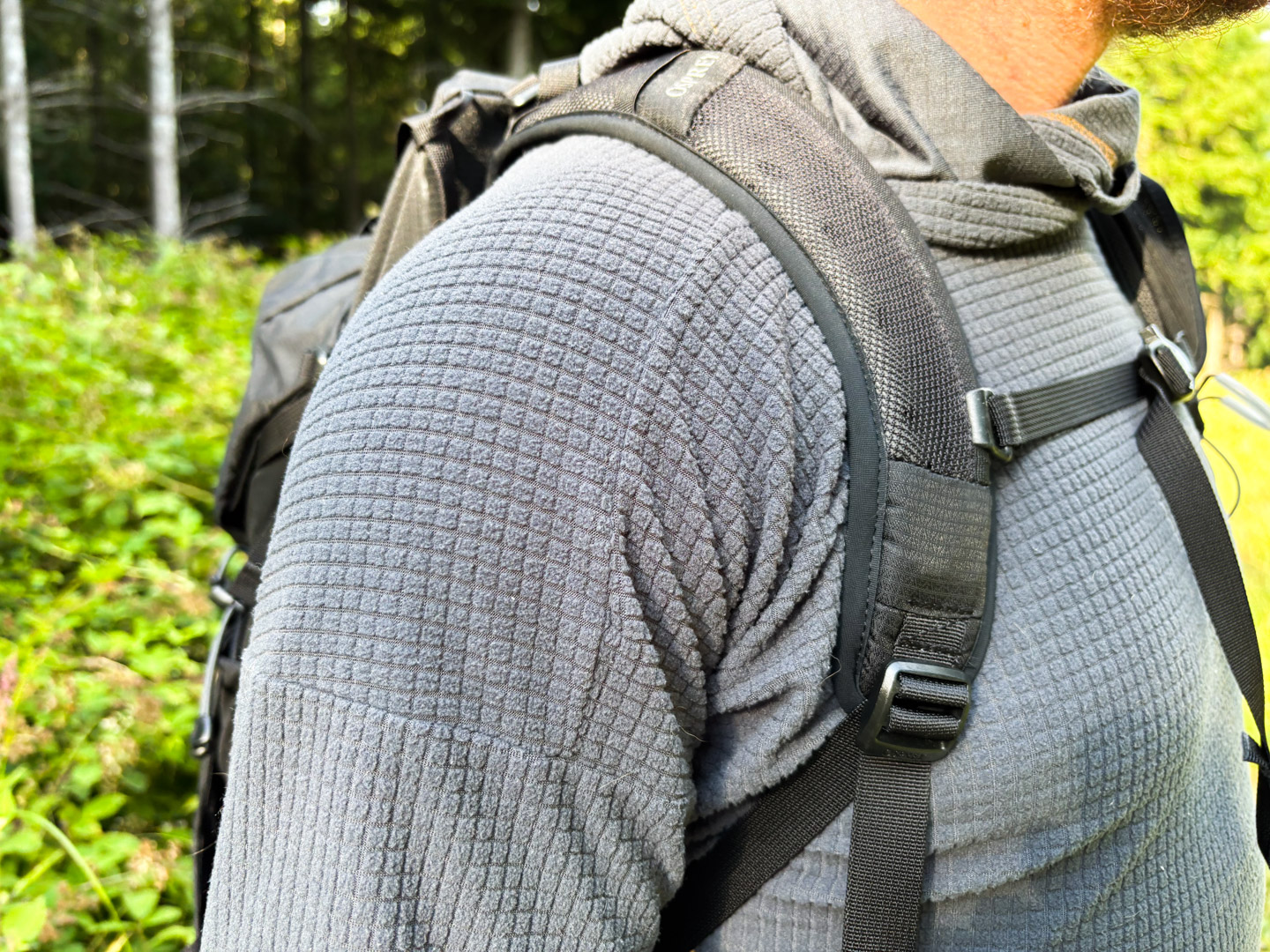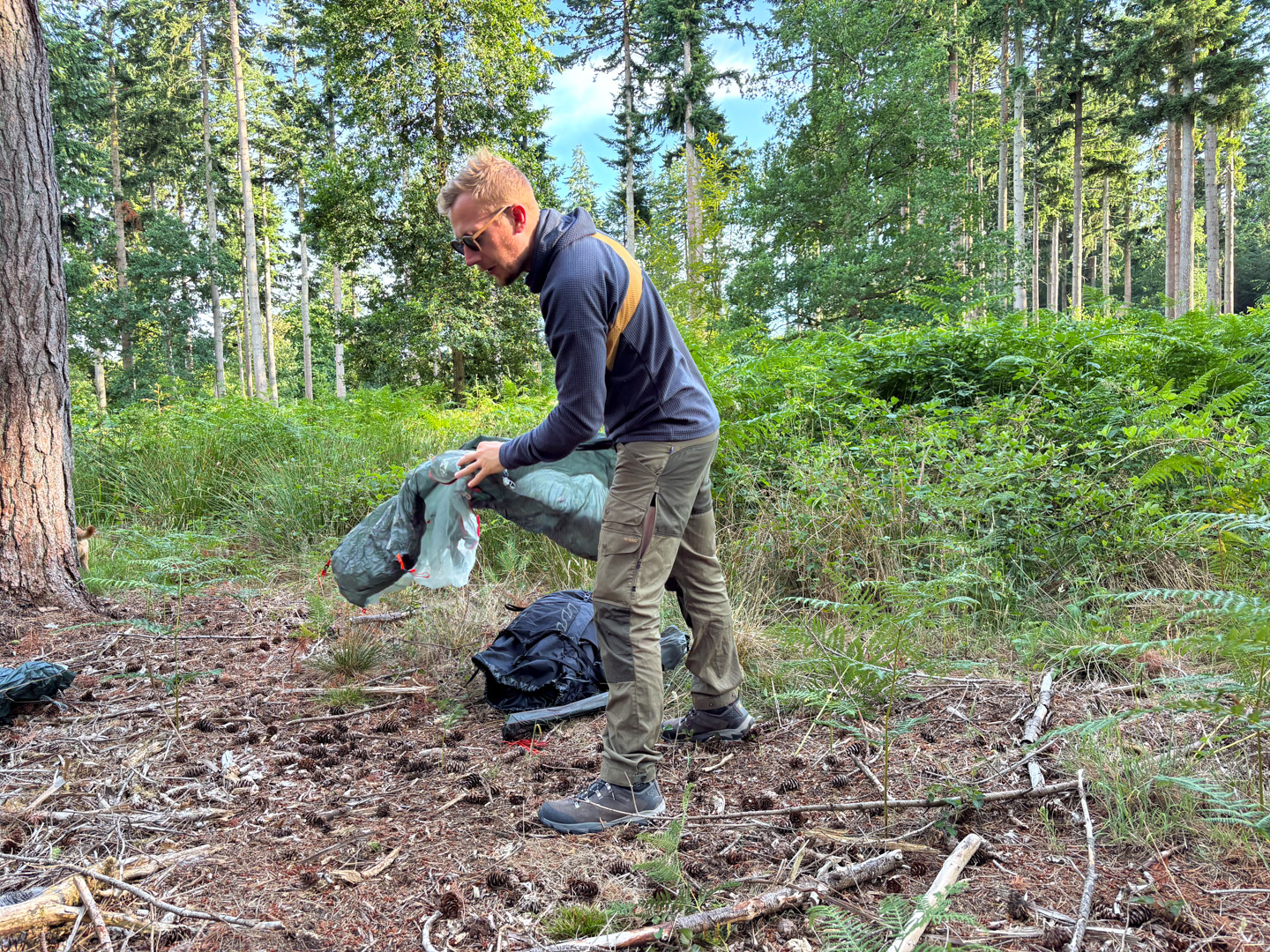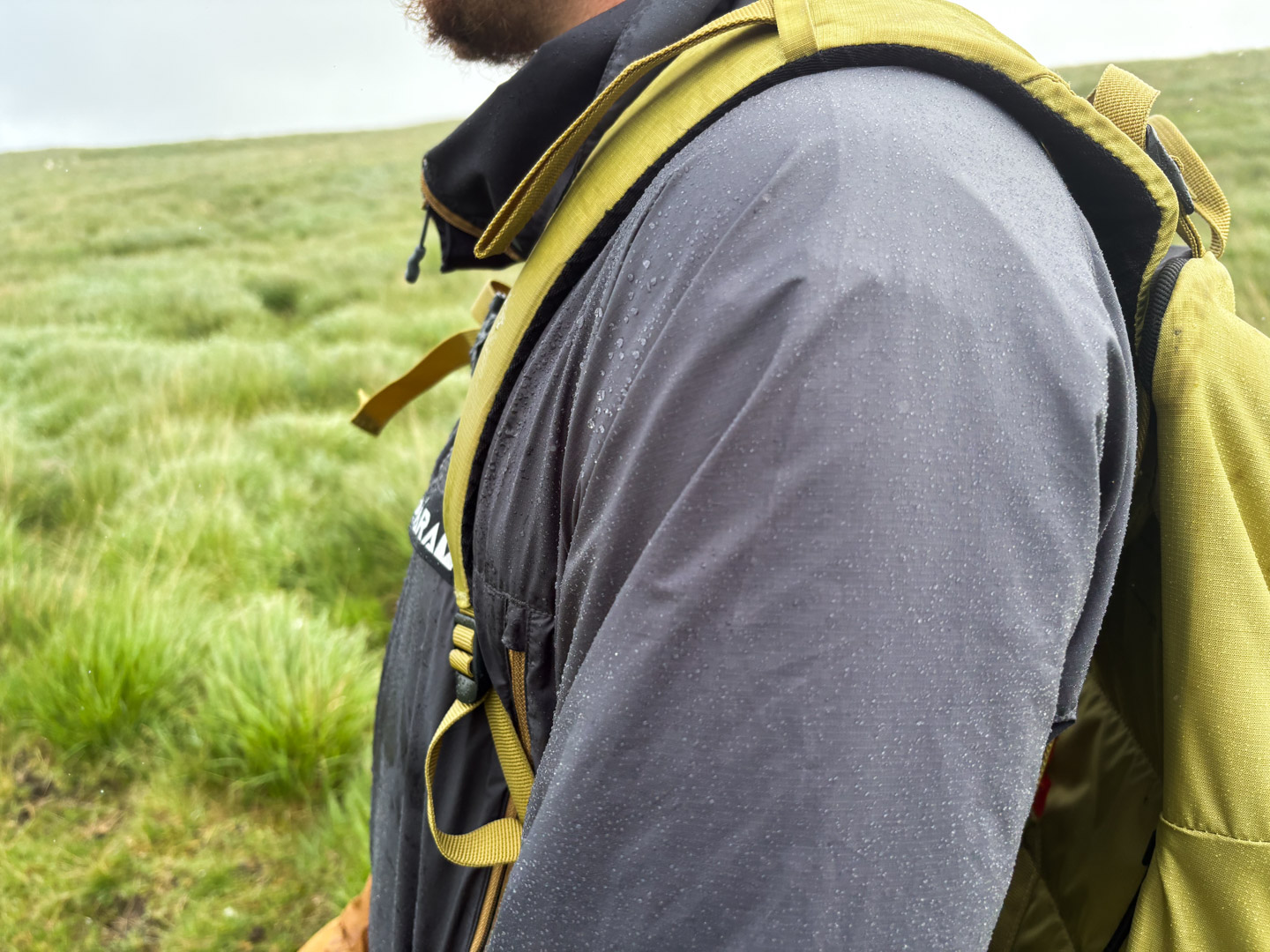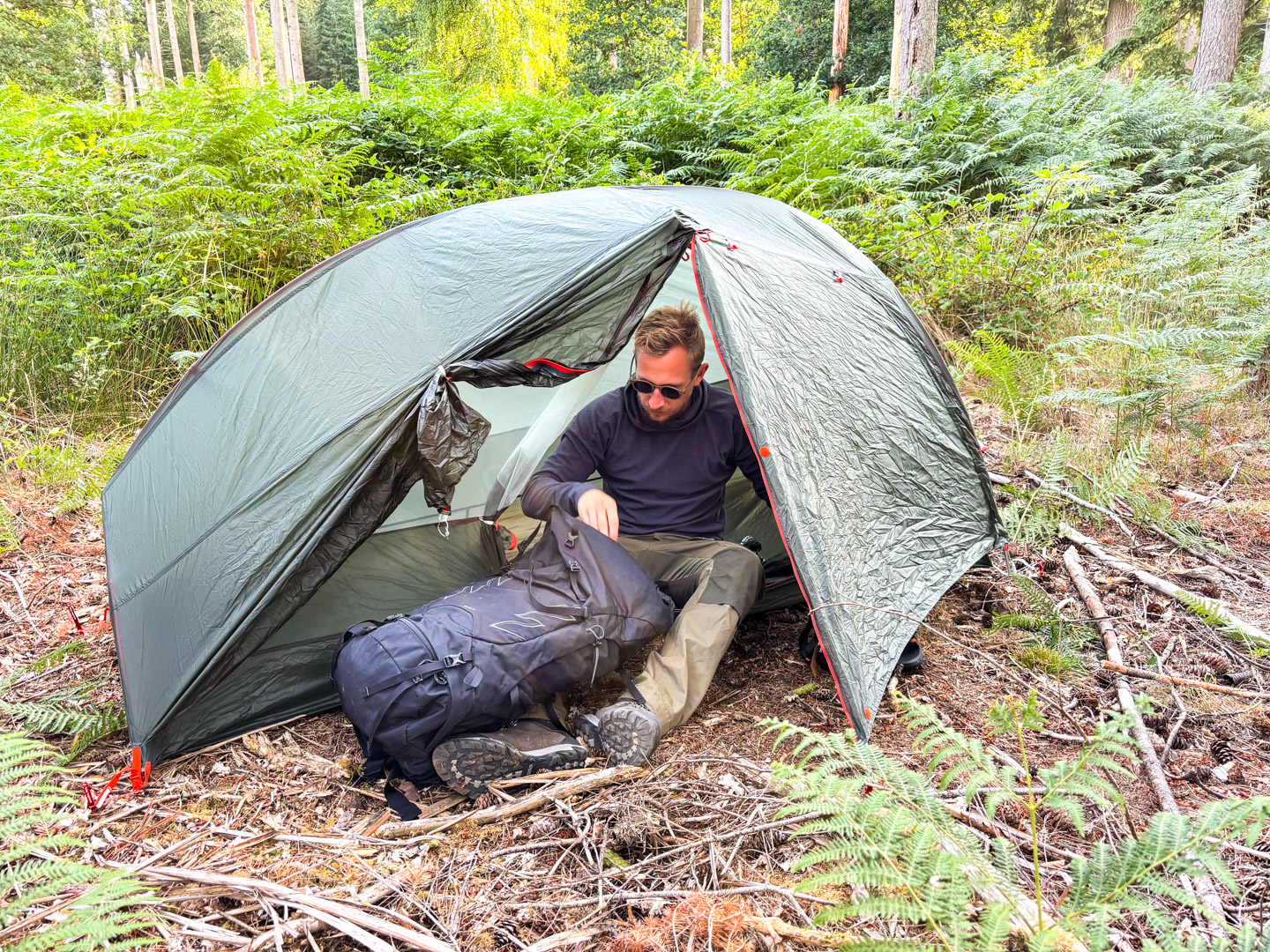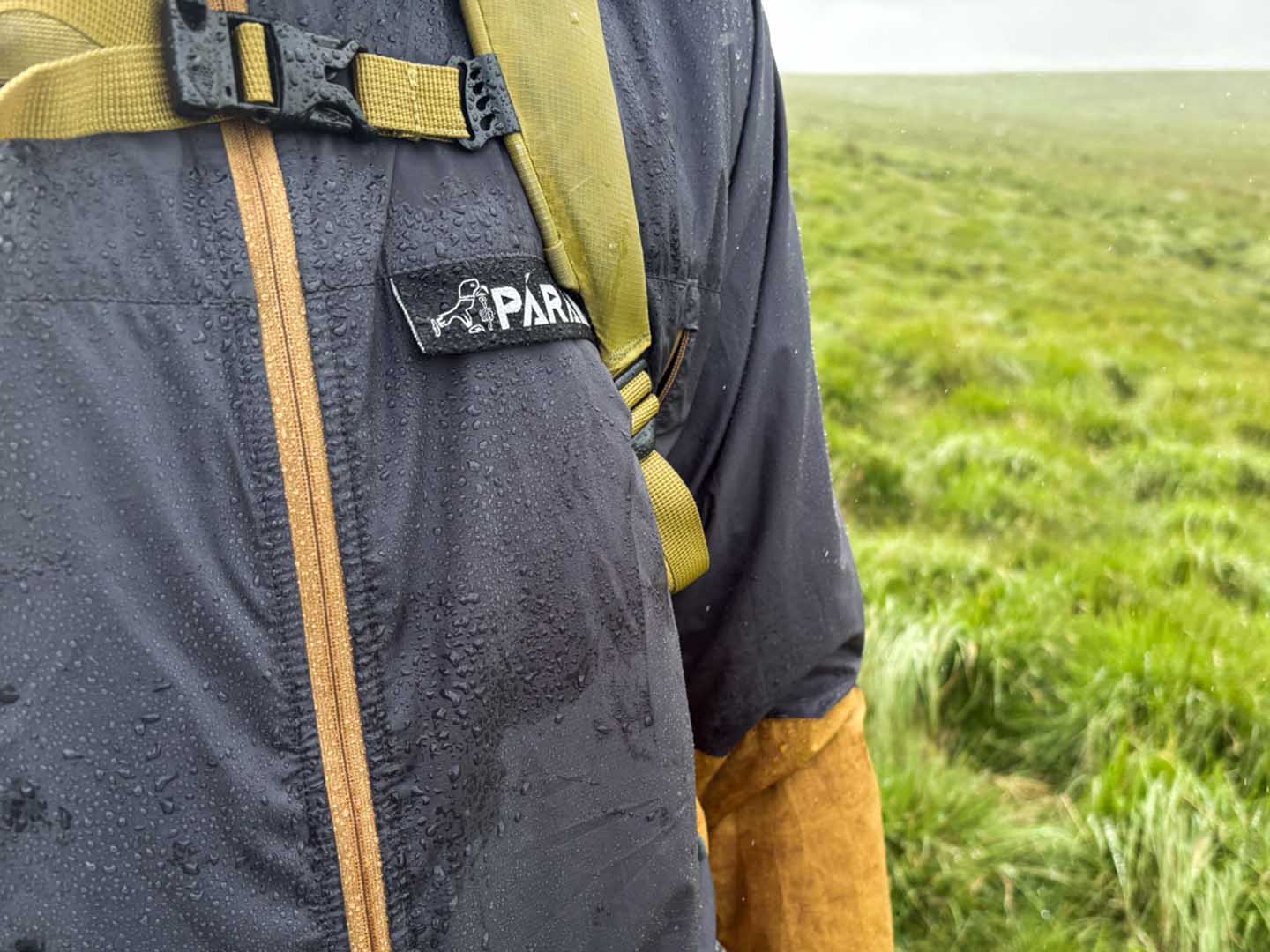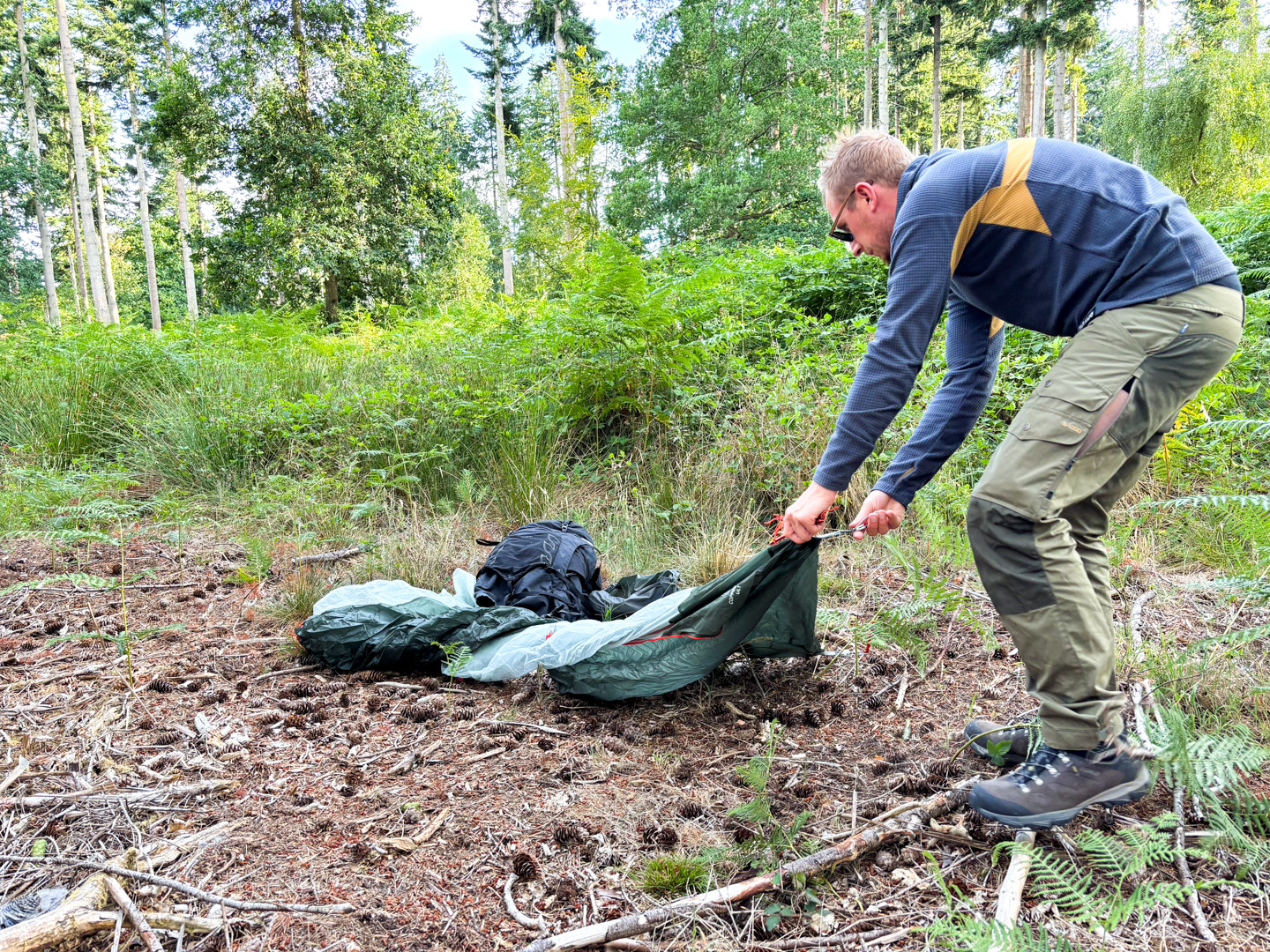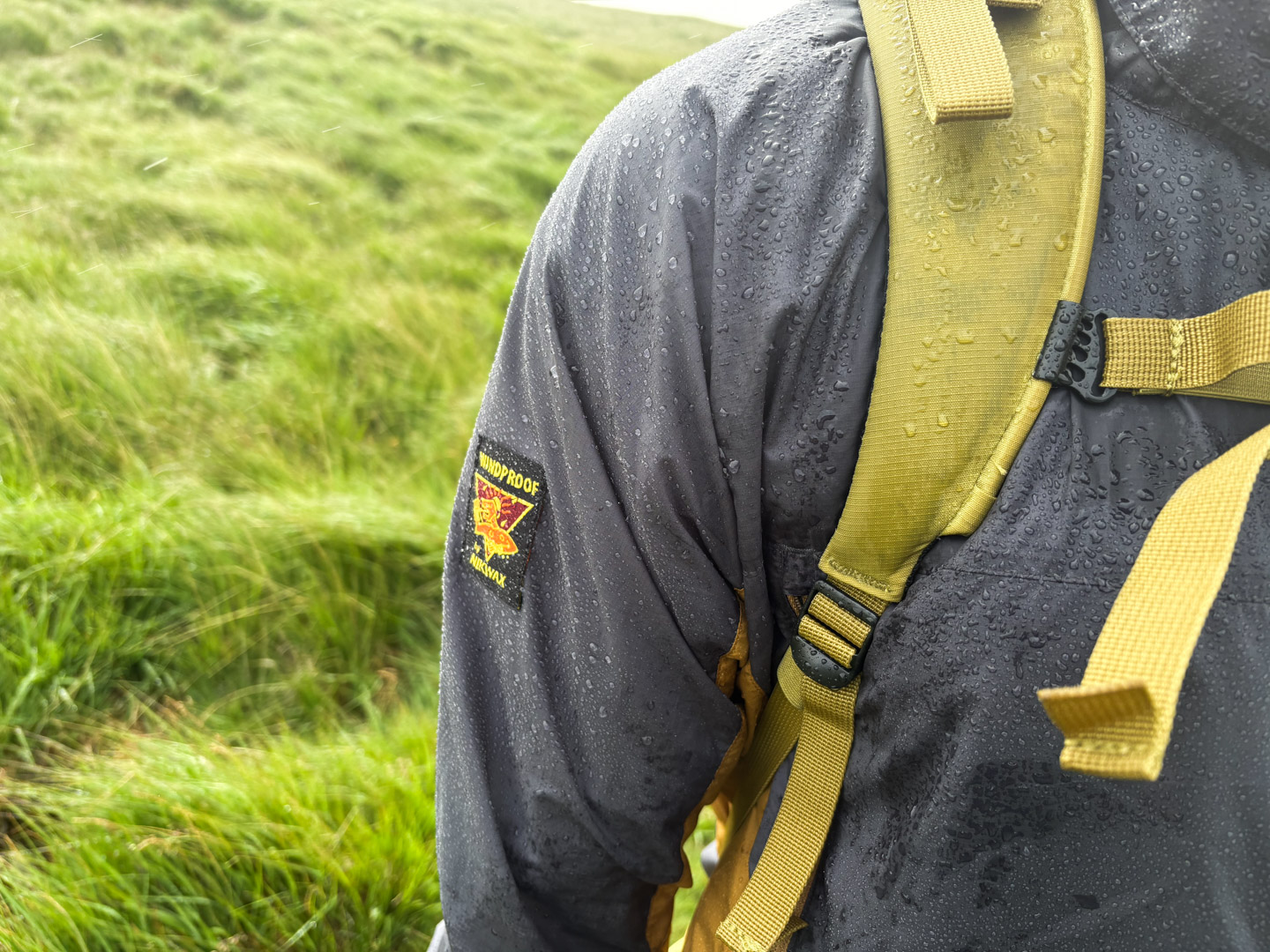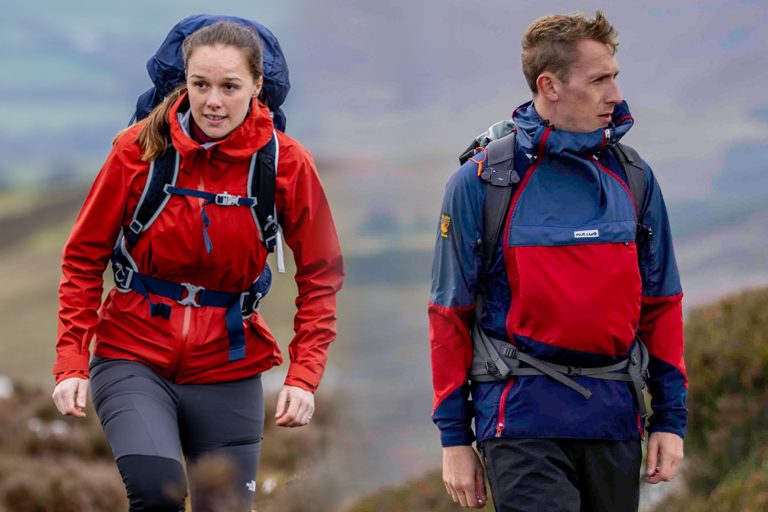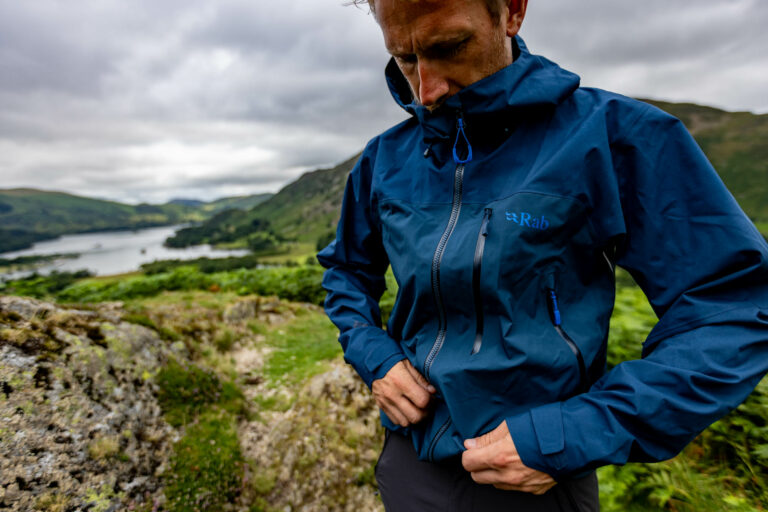The Páramo Velez system, which is available for men and women, offers a different approach to outdoor protection, one that involves two layers which you can wear individually or together depending on the conditions and the tempo you’re going at. I’ve been testing this system out over the last few months, mainly while surveying walking routes in the Welsh mountains for a guidebook I’m working on, but I’ve also been wearing it for cycling and running – and just day to day too. What I’ve found is something that offers a lot of versatility.
The Concept
The Velez Grid Baselayer is made from a reasonably thick microfleece and is designed to be worn directly against the skin. It has a grid construction, with little squares of fleece fibres and air channels in between them. It’s a warm layer but I’ve still found that I can wear it like a normal long sleeve t-shirt on milder summer days as the air channels allow some warmth from your body to escape. Its best application, however, is as a heat-trapping layer worn under other layers.
The Windproof is a very light layer of polyester that will fend off wind and light rain. This can be worn over any type of baselayer, but it works particularly well with the Velez Grid Baselayer. Páramo say that the two garments worn together – forming the Velez System – will trap heat, fend off wind, and repel rain while also wicking away moisture that’s generated when you sweat.
Páramo Velez System: Performance
The baselayer is very comfortable to wear and hugs close to your skin and it serves as an excellent baselayer in a winter layering system. With the Velez Windproof over the top, I’ve found it makes for a system that will cope with most conditions from mid-spring through to mid-autumn.
Related: Win a Páramo Velez System for Yoursef!
In blustery conditions, the Windproof on its own does fend off the wind. I wore it just over a plain T-shirt for a few days in summer while exploring the Causeway Coast in Northern Ireland, and it did keep the chill off well. This was noticeable during bike rides and trail runs too.
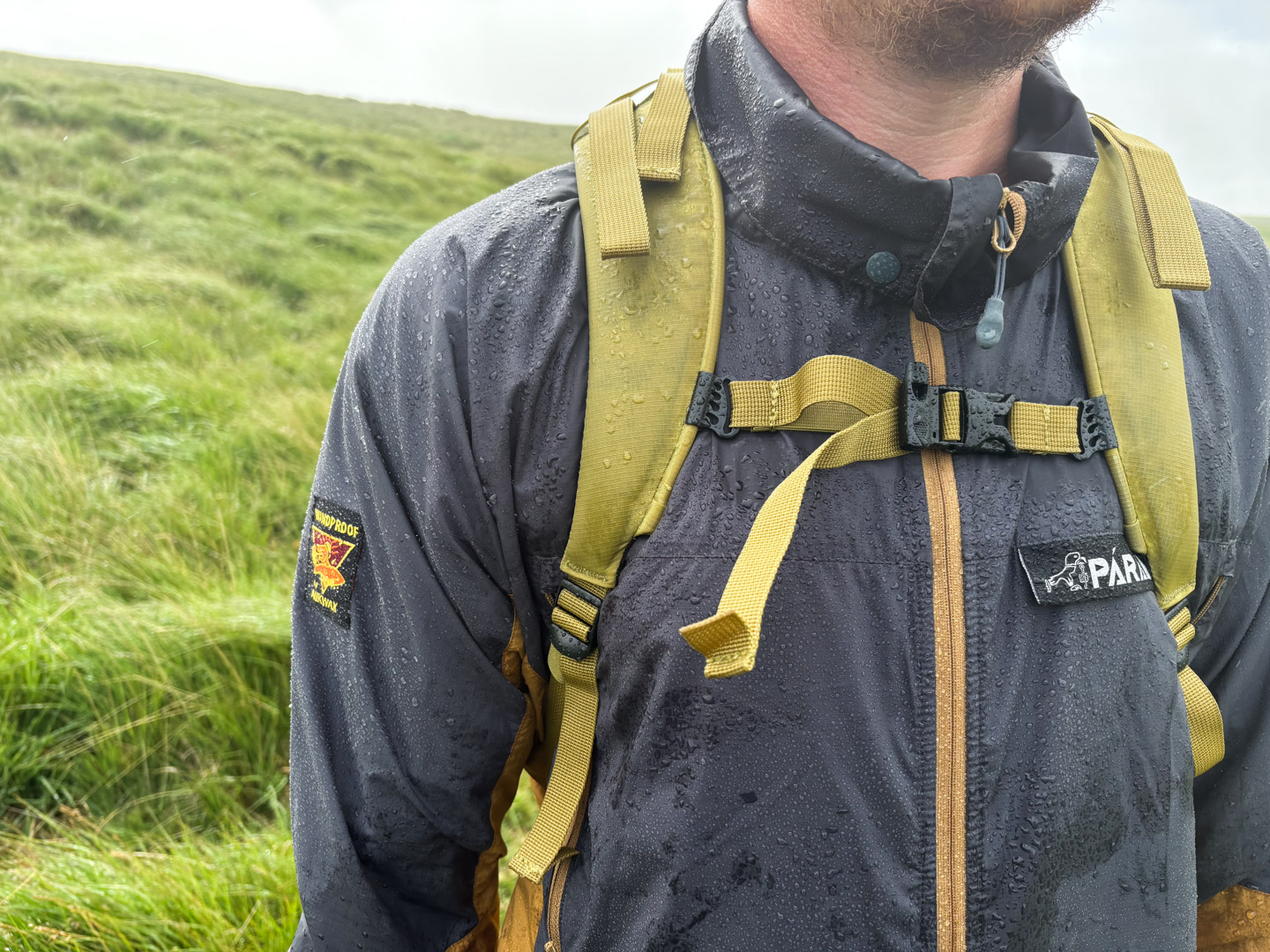
While this system is designed only for windproofing, I’ve found that the two layers cope well with light rain. You do start to feel some saturation in heavy and persistent rain however. Fortunately, while the fabrics can become saturated, they also dry noticeably quickly. On one occasion, while wearing the system in the Cambrian Mountains, I got pretty heavily soaked in a downpour that lasted about an hour. After that spell, the rain stopped, and within 30 minutes I felt bone dry again. That’s because the two layers are not only breathable but also highly wicking – they’re constantly working to spread out moisture thinly so that it can evaporate into the atmosphere more quickly.
That, to me, is one of the big advantages of Páramo’s systems; you get a degree of protection from external moisture and also lots of breathability. With conventional waterproof jackets, you might get more protection from rain, but they often come up short when it comes to dealing with internal moisture.
Don’t get me wrong, I’d still prefer to have a bombproof shell with me on those brutally wet days, but on those typically changeable, mild days that we often get in the UK, I find systems from Páramo, like the Velez, work nicely.

